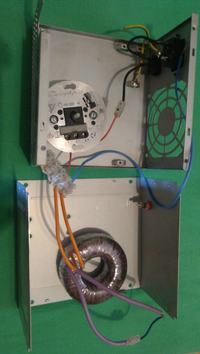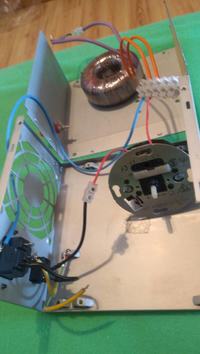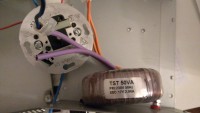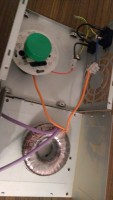Hello, this is my (I think) first post, also Hello to you very warmly.
I am looking for advice about the power supply for cutting foamed polystyrene.
I have:
- dimmer up to 300W with built-in fuse
- 50Va toroidal transformer
- kenthal resistance wire 0.3
- some wires and plugs, crocodile clips, meter, on-off switches
assumptions
- a box for easy carrying
- safe (not shocking)
- for cutting foamed polystyrene (wire length ~ 1100mm)
I started to turn the whole thing and here I have a question for you whether I am going in the right direction
what to add (some fuses diode resistors ????)
which is possibly wrong
I will add that the photo shows a short-circuited transformer at the output for symbolic resistance wire. (purely illustrative.)
Thank you in advance for any help.


I am looking for advice about the power supply for cutting foamed polystyrene.
I have:
- dimmer up to 300W with built-in fuse
- 50Va toroidal transformer
- kenthal resistance wire 0.3
- some wires and plugs, crocodile clips, meter, on-off switches
assumptions
- a box for easy carrying
- safe (not shocking)
- for cutting foamed polystyrene (wire length ~ 1100mm)
I started to turn the whole thing and here I have a question for you whether I am going in the right direction
what to add (some fuses diode resistors ????)
which is possibly wrong
I will add that the photo shows a short-circuited transformer at the output for symbolic resistance wire. (purely illustrative.)
Thank you in advance for any help.







